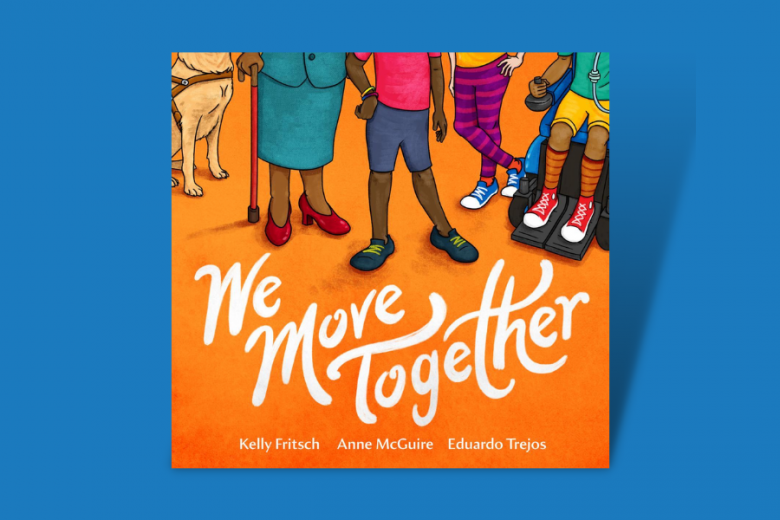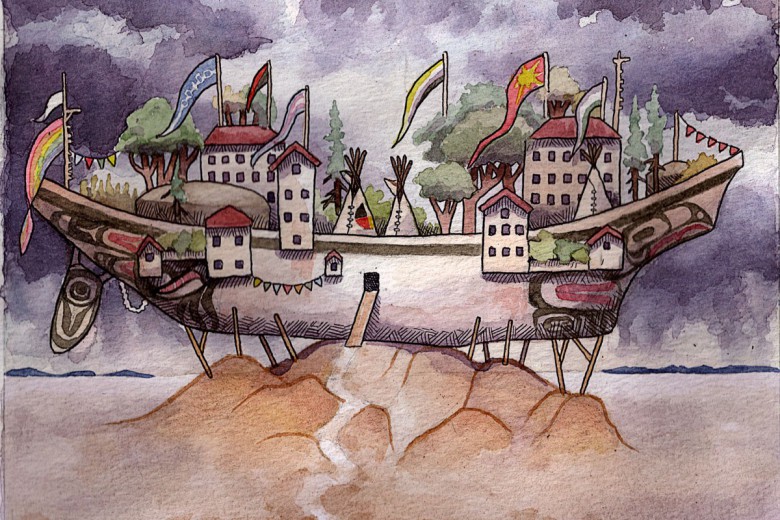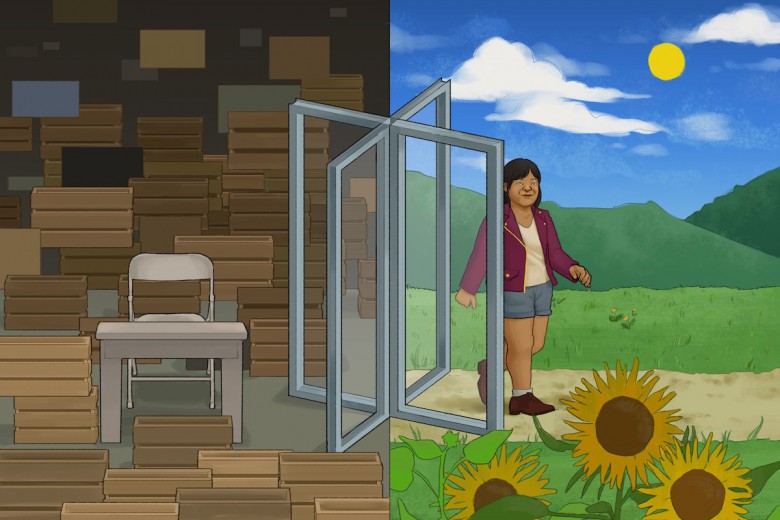In February 2015, the Supreme Court of Canada unanimously overturned the prohibition on assisted suicide in a decision known as Carter v. Canada. In the wake of this decision, and as we witness the development of the medical assistance in dying legislation (Bill C-14), I see deep divisions and hear grave concerns in the disability communities where I live and work, and where my heart resides. To paraphrase disability rights advocate and my friend Allen Mankewich, when you talk about many of the medical conditions you’d rather die than face, you are talking about me.
Crash course on Carter
Medical assistance in dying (MAID) – a patient’s intentional request to be provided with the medical advice or means to commit suicide – was considered a crime under the combination of two sections of the Criminal Code of Canada: Section 241(b), which prohibits anyone from counselling or assisting another person’s suicide, and Section 14, which prohibits anyone from consenting to the infliction of death. Until Bill C-14 passes and the Criminal Code is amended, the Supreme Court’s ruling serves as an exemption from these provisions.
Gloria Taylor, who had amyotrophic lateral sclerosis (ALS) and died of an infection from a perforated colon before the case reached the Supreme Court, and Lee Carter, on behalf of her mother Kay, who had spinal stenosis and sought life-ending measures in Switzerland, joined the British Columbia Civil Liberties Association (BCCLA) to challenge the Criminal Code’s assisted suicide prohibition. The Supreme Court was tasked with considering whether the criminal provisions that have long prohibited physician-assisted dying infringe on the Canadian Charter of Rights and Freedoms’ rights to life, liberty, and security of the person.
In a unanimous ruling, the Court found that the criminal prohibition, meant to protect vulnerable persons pressured into committing suicide, was too broad because it also applied to persons who have a considered, rational, and persistent desire to die. So the court instructed Parliament to amend the Criminal Code to exempt medical professionals from prosecution in cases where a competent adult with a “grievous and irremediable medical condition” that causes “enduring and intolerable suffering” consents to assistance in dying.
Since Carter: Bill C-14
In response to the ruling by country’s highest court, the federal Liberal government developed Bill C-14. If passed, it will amend statutory law to exempt medical professionals from prosecution should they provide MAID, and establish a legislative framework for defining the MAID eligibility criteria and ensuring safeguards are in place.
Under the identified eligibility criteria, the bill defines a grievous and irremediable medical condition as a “serious and incurable illness, disease or disability” that leaves a person in “an advanced state of irreversible decline in capability,” which causes physical or psychological suffering “intolerable to them” and will result in a “reasonably foreseeable” natural death.
If C-14 passes, the safeguards will inform the process for requesting MAID: first, the eligible person requesting MAID must sign and submit a written request that is reviewed by two medical practitioners. Then, 10 days must pass between the request for MAID and its delivery. Consent must be informed, can be withdrawn, and must be reiterated immediately prior to receiving medical assistance in dying.
Reflections on C-14
The text of the bill attempts many strategic compromises – and as such, it has left critics from all sides dissatisfied.
On the side of the BCCLA and the Carter family, the term reasonably foreseeable death is cause for concern. If the term were interpreted to mean terminal illness, C-14 would not satisfy the Supreme Court ruling in Carter, which was not limited to terminal illness. But Minister of Justice Jody Wilson-Raybould has argued that Parliament’s task was never simply to “cut and paste” the Carter judgment; the legislation purposefully used flexible terminology. The language of the bill states that a reasonably foreseeable death need not come with a “specific length of time that [a person has] remaining.” This means we’re not exactly sure how the phrasing will be applied, what it could mean beyond terminal conditions, or whether what is meant to be a restriction has room to be massaged into a more expansive interpretation down the line.
Ahead of the legislative drafting, the Special Joint Committee on Physician-Assisted Dying was appointed by Parliament to consult with experts and make informed recommendations on the substance of the bill. Among their recommendations was to make MAID available via advance directives, and to mature minors and persons with psychiatric conditions. But C-14 prohibits advance directives and makes no mention of the latter categories; it limits access to MAID to those 18 and over and does not include any content about mental health, much to the dismay of Dying With Dignity Canada, an organization whose testimony helped shape the committee recommendations. But as law professor Jocelyn Downie has pointed out, it’s not as though psychiatric conditions have been explicitly excluded in the language of the bill. And Parliament has ordered further study into all three of these areas in order to account for their complexity – so, it would seem C-14 is not so much a definitive and final answer on who qualifies for assistance in dying as it is a first step.
I’m not convinced that the open-ended nature of Bill C-14’s language, and its perhaps deliberate lacunae, are positive moves, though – not when the interests of vulnerable populations are at stake. But I’m getting ahead of myself.
Perhaps most concerning is what has been bracketed out of the proposed safeguards of the Vulnerable Persons Standard (VPS), an ethics statement assembled by experts on MAID (lawyers, physicians, psychiatrists, disability rights advocates, and professors) who were dissatisfied with the joint committee’s report recommendations. The VPS provides safeguards to prevent coercion or abuse of people in vulnerable positions.
C-14 includes some of the safeguards stemming from the VPS – the waiting period, the independent assessments by two medical practitioners, and the prohibition of MAID requests by advance directives. But other elements of the Standard are not present in C-14’s safeguards, including calling in a judge or independent body to review and authorize requests. It also remains vague on the specifics of assessing a person’s vulnerability.
The Canadian Association for Community Living (CACL) indicates that the bill’s preamble makes promising statements about honouring disabled persons – like the call to avoid devaluing disabled persons’ quality of life – but otherwise the substance of the bill fails to deliver on its promises. The CACL’s legal representative, David Baker, says, “[T]he bill itself is completely silent about the issue [of vulnerability].” Rhonda Wiebe, co-chair of the Ending of Life Ethics Committee of the Council of Canadians with Disabilities (CCD) agrees: “Unfortunately, C-14 has some serious gaps when it comes to protecting the vulnerable.”
Why this matters
It is worth asking, then: who are the vulnerable? Who are these people whose interests are meant to be balanced against assisted-dying law? Who are the legislative safeguards for?
“Illness, disease or disability” casts a wide net. Yes, eligible conditions must be incurable, must diminish a person’s capabilities, must cause suffering, and must be linked to that tricky condition of reasonably foreseeable death. But this still leaves a lot of room for a range of disabilities. Those situations that qualify for MAID under Bill C-14 can have a multiplicity of causes (including genetic inheritance and injury), can impact varied functional capacities (from mobility to motor function to sensory faculties), and can result in deterioration at different rates (from rapid decline to gradual changes over years). Suffering has been so widely and subjectively defined that eligible disabilities need not cause physical pain at all.
Ours is a rather large party, quite the motley crew. The through line that ties disabled persons together is the way bodily difference is and has been deployed as grounds for historical disadvantage and discrimination. We might understand disability as a bodily condition that is perceived and treated as different from benchmark or species-typical framings of the human body. This makes vulnerability assessments key to MAID provisions because a diagnosis of disability comes packaged with psychosocial conditions, with negative perceptions and associations about quality of life, and with material impacts. The expert testimony Wiebe delivered on behalf of the CCD at a special joint committee hearing emphasizes exactly this point: “[T]here are many social, economic, and other environmental factors that increase the vulnerability of persons with disabilities, especially the newly disabled. Careful scrutiny must take place to ensure that there aren’t other remedies, besides death, that will lessen the suffering and indignity of these people.”
An ontology of vulnerability
Vulnerability – being at risk for harm – is part of the human condition. It comes with dimension, and it unfolds in relation to others.
Vulnerability may be physical, tied to functional and health-based limitations that disability, disease, and injury impose, along with the effects of material deprivation, including hunger, fatigue, and cold. But there are also compounding social and interpersonal vulnerabilities, intimately entangled with representation and treatment. They are caught up in depictions of disability as burdensome, as tragic, as undignified, as always already a death sentence, as worse than death. When people embody difference and that difference is assumed to be an indication of inadequacy, they face barriers to social participation as students, parents, and workers. In this way, vulnerability can have economic and political weight connected to discrimination, poverty, and resource deprivation.
Disability scholar Catherine Frazee, who has spilled a great deal of ink in response to assisted-dying law, argues her experience of dignity as a disabled person is not diminished by her physical vulnerabilities – for example, her need of feeding tubes or personal support workers – but by people “consumed by all of the perceived misfortunes of my predicament.” She recounts a story told by an expert called before Parliament to share the “disability take” on MAID, an expert she need not name because the experience she is relaying is all too common for disabled persons: “Another spoke from personal experience, about the time someone said to him, ‘I don’t know how you do it; I’d rather be dead than in a wheelchair.’” That this sort of audacious and blatant devaluing of a person’s quality of life is a common tale should speak to how difficult it becomes to separate psychological suffering brought on by disability from psycho-social constructions of disability.
The trouble with medicalization
It is worth bearing in mind that, so far as C-14’s safeguards identify, health-care providers have been tasked with the incredibly complicated work of determining who is eligible, who is vulnerable, and who has a persistent and rational desire to die entirely rooted in their med-ical diagnosis. The VPS sought to shift some of the responsibility for making these sorts of determinations away from medical practitioners precisely because the medical field has long been a fraught space for disabled persons. Medical diagnoses are oriented not toward the accommodation of disability, but rather its elimination: through curative, surgical, and rehabilitative strategies; through institutional and carceral management that has historically been overseen by medical staff; and through making death easier than living with difference.
Stories confirming these attitudes abound. For instance, speaking for the CACL’s Protecting Choice & Safeguarding Inclusion campaign, Norman Kunc described his disabled partner’s experience in hospital following a minor surgery: nurses had placed the “do not resuscitate” order on her medical chart, which they had wrongly just assumed – and kept assuming throughout her stay – that she would want. “People don’t realize the fear that disabled people have when they go into the hospital,” Kunc says. Similarly, Mankewich has argued in reference to lax assisted-dying safeguards: “Our society equates quality of life with the absence of disability … if I found the right doctor, I could string them along to believe I need an assisted death.”
Looking beyond the bill
To my chagrin, we do not yet know how vulnerability will be weighed as C-14 moves forward and more people come to request medical assistance in dying. But socio-political vulnerabilities are complex things, perhaps best addressed outside the language of this impending statute.
Minister of Health Jane Philpott acknowledges that discourse over MAID legislation has unearthed concerns about palliative care services and policy, which are designed to alleviate suffering for people with terminal conditions and support families through processes of bereavement. In their own assessment of vulnerabilities, the CACL recommended tackling the inadequacies of access to disability-related supports, labour force exclusion on the basis of disability, and conditions of impoverishment that disproportionately impact disabled persons. Disabled persons are at higher risk of physical, sexual, and verbal abuse, as well as neglect, humiliation and dehumanization, often at the hands of caregivers and in the context of institutional or residential settings; this routine violence, even the threat of violence, affects the perception and lived experience of disability.
Since Carter, MAID legislation has been as inevitable as a cart barrelling downhill, and the disability community has a vested interest in what the law becomes and how it is applied. But all too often, this is a community bogged down by associations with death.
By all means, let’s honour autonomous end-of-life decision-making, let’s not dismiss the Gloria Taylors for deciding it is time to die. However, it would seem that with the development of a more permissive end-of-life decision-making regime, there exist corresponding or implied obligations to dismantle the environmental conditions that make disability so unlivable.
Since the publication of this article, the Senate proposed several amendments to C-14: ensuring that persons seeking MAID are informed of palliative care consultation and the treatment, technology, or support options available to them; restricting the role of beneficiaries in signing a request for or administering MAID; and setting conditions for Ministry of Health monitoring and reporting, among others. The Senate voted to pass the amended bill into law on June 17, 2016, but it passed without the amendment that the terminology “reasonably foreseeable death” be replaced with Carter language to expand eligibility criteria. The B.C. Civil Liberties Association is preparing a court challenge, claiming the language of the now-passed legislation is unconstitutional – that is, it does not meet court standards set in Carter. Justice Minister Jody Wilson-Raybould has promised that the passing of C-14 does not end political discussion on end of life decision-making.







